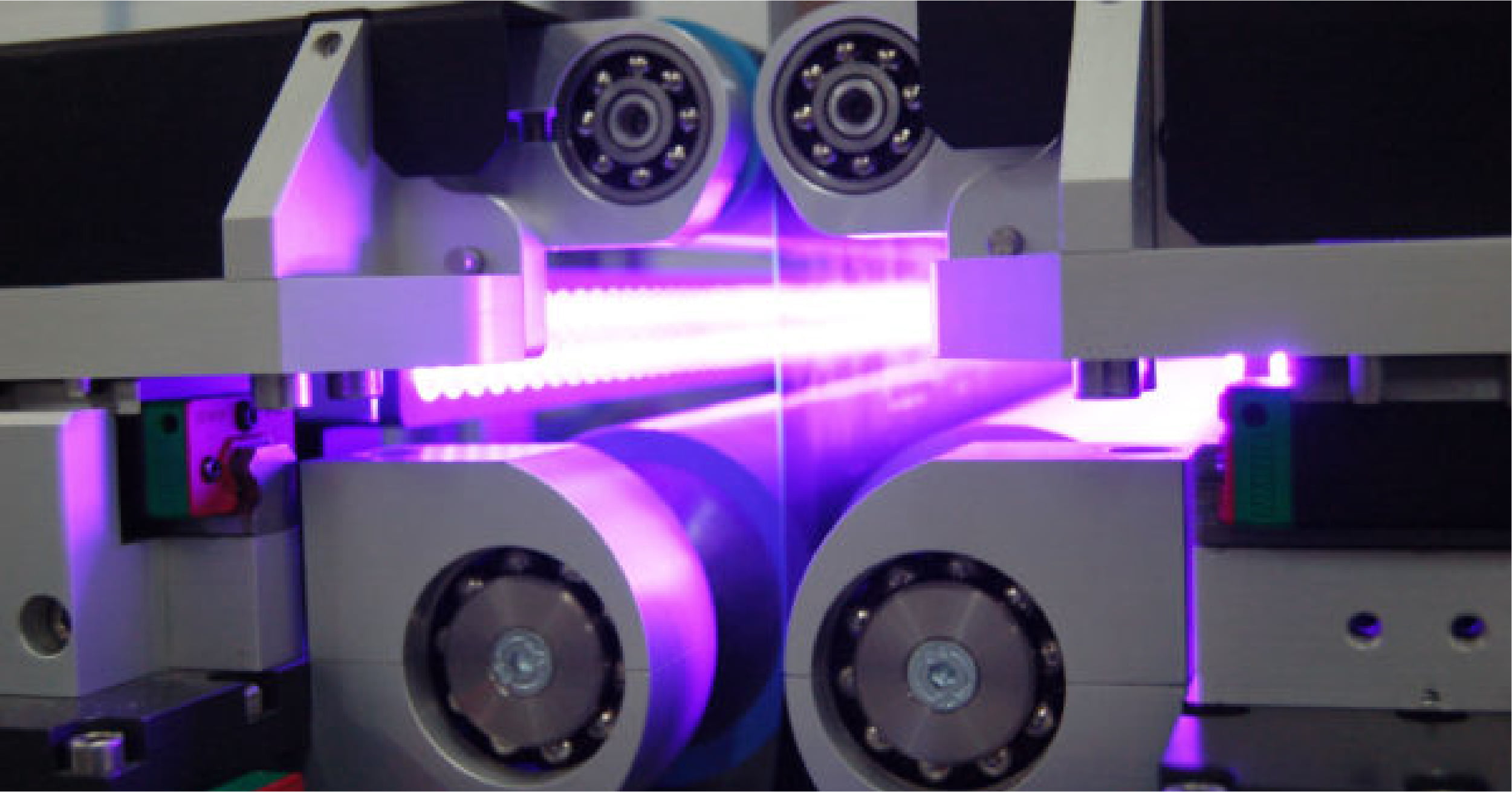
Not a week goes by that we don’t hear of another digital printer manufacturer making the switch to LED curing technology for ultra-violet (UV) inks. In the digital printing arena, this is more common for wide format digital print engines. UV-curable inks stick to pretty much any nonabsorbent substrate including paper and board, wood, PVC, glass, metals and ceramics. They produce minimal VOCs so they don’t need expensive exhaust systems.
The arguments in favour of using LEDs instead of conventional mercury arc curing systems for UV ink curing get more compelling as technology advances and as more developers follow EFI’s lead and go for the LED alternative.
In part the rise of LED curing technologies is due to the market’s acceptance of UV-curable inks. Unlike conventional inks, UV inks do not dry through evaporation, but rather must be changed into a solid surface that sits on top of the substrate. A UV light source heats the printed inks, which contain photoinitiators and other ingredients. The heat causes photoplymers in the ink to cross link and form a solid layer. The ink sits on the substrate surface rather than being partially absorbed into it, so these inks can have much larger and more intense colour gamuts than conventional offset inks. They are also instantly dry so the prints can move straight into finishing, storage or be readied for shipping. This can hit the bottom line, in that it means faster throughput in the plant and ultimately more jobs on press.
And LEDs are cheaper than mercury bulbs, lasting for several years instead of two or three which is the case with the mercury lamps. LEDs are far kinder to fragile substrates than mercury arc lamps, they use less energy, don’t have to warm up before they start working and they can be switched off when there is no curing to be done. They also pose no risk if they fail, unlike mercury arc lamps which involve glass and mercury and lots of heat.
The thing mercury arc lamps have going for them is their sheer intensity and power, which means curing takes place very, very quickly. For high productivity environments where absolute top notch quality output must be produced at speed, mercury arc curing is still the preferred choice for some manufacturers, such as Inca. However, it’s just a matter of time before LED technology advances such that it makes sense for all manufacturers make the switch.
– Laurel Brunner
